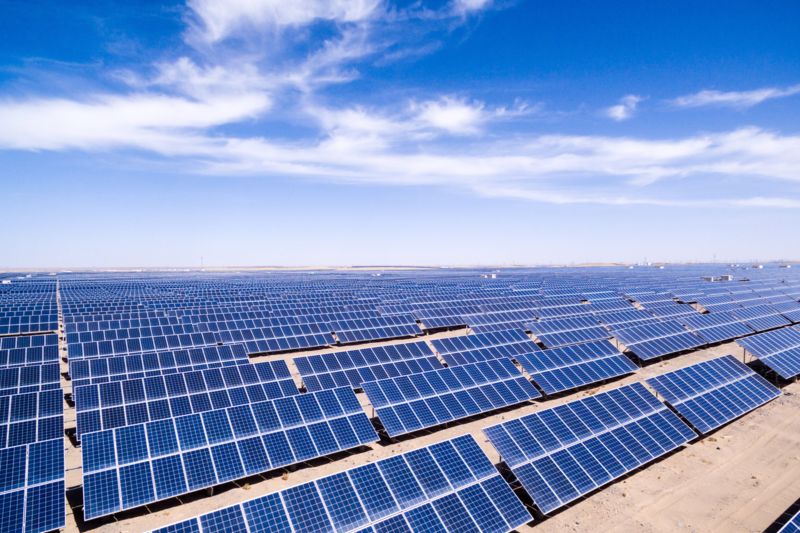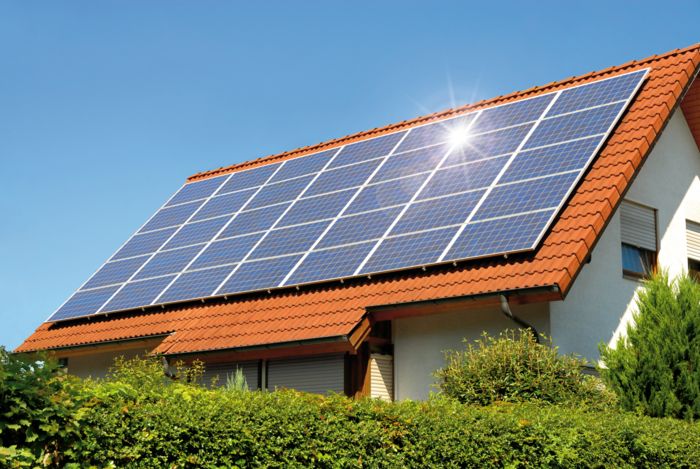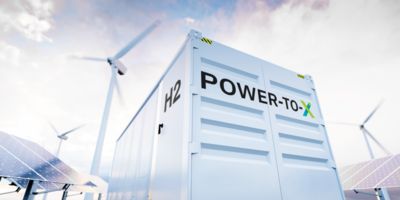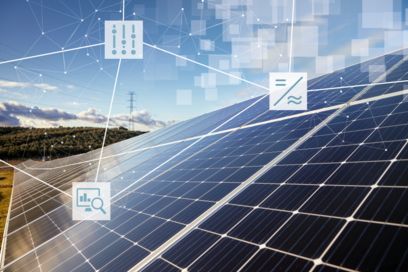What is power-to-heat? Power-to-heat (PtH/P2H) describes a process in which electrical energy is converted into heat. This heat can be provided for direct use or fed into a heat storage system.

Brief summary
Power-to-heat is an approach that enables volatile and fluctuating renewable energies to be used more effectively. The concept has evolved over time, in particular thanks to advances in storage technology and the increasing demand for sustainable energy solutions. It forms a bridge between power generation and the heat sector and contributes to the optimization of the power supply.

How does power-to-heat work?
PtH uses electrical energy, usually from renewable sources such as wind or solar, to heat water or other media. This is done in special power-to-heat systems, which are often equipped with electrical heating elements or heat pumps. The heat generated in this way can be used in local heating systems or district heating pipes. This approach optimizes the integration of renewable energies into the existing energy system. A decisive advantage lies in its flexibility: storage technologies can be integrated into the system, and the converted heat can be called up as required. Grid stability is increased while carbon emissions are reduced. Power-to-heat is therefore one of the power-to-X technologies.
Power-to-heat and district heating supply
District heating supply networks can efficiently distribute the heat generated by PtH in urban areas. In urban areas where the demand for heating is particularly high, this combination enables the efficient use of existing infrastructure to further reduce dependence on fossil fuels. Furthermore, such systems contribute to grid stability by converting and storing surplus electrical energy into heat, which can then be fed into heating networks – with a delay if required. Companies and municipalities not only benefit economically by reducing operating costs, but also make an important contribution to climate protection.

Power-to-heat in a single-family home
Homeowners can use the heat generated by PtH to heat water or rooms. In single-family homes, this technology is often used in combination with photovoltaic systems. The system can act as a supplement to conventional heating methods and offers the possibility of reducing heating costs, as fewer fossil fuels are required. In order to meet individual energy requirements precisely, heat production can be optimized by integrating intelligent control systems. Power-to-heat therefore provides a sustainable, cost-effective, and environmentally friendly heating alternative in private homes, which can help to relieve the strain on the public power grid.

Power-to-heat in industry
In particular in energy-intensive industries, such as the chemical industry and the steel industry, this technology can help to optimize energy consumption. The heat generated can be used in production processes, e.g., for generating steam or for drying materials. Power-to-heat systems not only offer ecological advantages, but also economic incentives, because they reduce energy costs and make legislative climate targets achievable. The flexibility of the industrial power supply is also increased, which is an important factor in times of volatile energy prices. Companies can increase their competitive edge and at the same time make a significant contribution to the energy transition.
The key role in the energy transition
Power-to-heat is playing a key role in the energy transition. This approach converts excess electrical energy into heat, which stabilizes the use of solar and wind power. This optimizes the gird capacity and increases the security of supply. PtH reduces greenhouse gas emissions by replacing fossil fuels and promotes the flexibility of the energy system through innovative storage solutions. This technology connects the electricity and heat sectors, supports the decentralization of the energy system, and facilitates the transition to a more sustainable energy future.
The advantages
PtH integrates renewable energy into existing systems, reduces carbon emissions, and improves grid stability, because less excess electricity is fed in. It increases the flexibility of the energy system, because the heat generated can be stored and used when needed. This is particularly advantageous for fluctuating energy production. In addition, PtH reduces the costs for energy imports and strengthens energy independence by using local resources. And last but not least, it promotes decentral energy solutions and increases the resilience of the energy system, which is crucial for the energy transition.
Summary
Power-to-heat is a future-oriented technology that enables the sensible use of surplus electrical energy in a range of different areas. By converting this energy into heat, PtH offers not only ecological, but also economic advantages, because it reduces both carbon emissions and our dependence on fossil fuels. PtH is becoming particularly relevant in urban and industrial applications, because it can contribute to the stabilization and optimization of existing grids. And last but not least, power-to-heat is making a decisive contribution to the energy transition by promoting the use of renewable energy sources and strengthening the resilience of the energy system.
Connect with our experts

More posts

What is power-to-X?
Power-to-X makes it possible to make electricity from the sun and wind storable and transportable.

What is peak shaving?
How companies can benefit from peak shaving.

The All Electric Society – how sector coupling works
Flexibility with a battery storage system and energy management.



